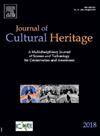The conservation soft box (CSB): An innovative, versatile, and low-cost technique to preserve cultural heritage
IF 3.3
2区 综合性期刊
0 ARCHAEOLOGY
引用次数: 0
Abstract
Ensuring the long-term preservation of cultural heritage, in accordance with conservation standards in museum collections, is a complex challenge that demands conservators to address various critical issues. Particularly, organic findings (e.g., textiles, paper, wood, human remains) require special measures to prevent chemical-physical and microbiological deterioration because of their delicate nature. One of the factors contributing to their degradation is the emission of Volatile Organic Compounds (VOCs) emitted for example by materials normally used in museum showcases, which contribute significantly to corrosive processes. Although numerous studies have been conducted to understand VOCs, there are currently no conservation systems available that provide adequate insulation and ensure complete protection against pollutants and degenerative agents. This study demonstrates how modern analytical techniques, and innovative polymeric materials have enabled the design and creation of a new storage system for the preservation of cultural heritage. This is the Conservation Soft Box (CSB), a device with a high level of tightness that allows the reproduction of customised environments tailored to specific conservation requirements. CSB’s constructive materials were validated for their low emissions of VOCs demonstrating compliance with safety standards. Additionally, a solution with activated carbon was tested to remove latent VOCs, which proved to be completely effective. In conclusion, the proposed innovative conservation system could represent a promising advancement in the preservation of cultural heritage, as its chemical safety, constructional versatile and cost-effective, and facilitates the procurement of suitable materials.
保护软箱(CSB):一种创新的、多用途的、低成本的保护文化遗产的技术
根据博物馆藏品的保护标准,确保文化遗产的长期保存是一项复杂的挑战,需要文物保护人员解决各种关键问题。特别是有机发现物(如纺织品、纸张、木材、人体遗骸)由于其脆弱的性质,需要采取特别措施防止化学-物理和微生物的恶化。导致其降解的因素之一是挥发性有机化合物(VOCs)的排放,例如通常用于博物馆展示的材料所排放的挥发性有机化合物(VOCs),这对腐蚀过程起着重要作用。虽然已经进行了大量的研究来了解挥发性有机化合物,但目前还没有可用的保护系统可以提供足够的绝缘,并确保完全防止污染物和退化剂。这项研究展示了现代分析技术和创新的聚合物材料如何能够设计和创造一个新的储存系统,以保护文化遗产。这就是保护软盒(CSB),一种具有高密闭性的设备,可以根据特定的保护要求复制定制的环境。CSB的建筑材料的挥发性有机化合物排放量低,符合安全标准。此外,还测试了活性炭溶液去除潜在挥发性有机化合物的效果,证明该溶液完全有效。综上所述,拟议的创新保护系统具有化学安全、结构多样、成本效益高、便于采购合适材料等优点,是文化遗产保护的一大进步。
本文章由计算机程序翻译,如有差异,请以英文原文为准。
求助全文
约1分钟内获得全文
求助全文
来源期刊

Journal of Cultural Heritage
综合性期刊-材料科学:综合
CiteScore
6.80
自引率
9.70%
发文量
166
审稿时长
52 days
期刊介绍:
The Journal of Cultural Heritage publishes original papers which comprise previously unpublished data and present innovative methods concerning all aspects of science and technology of cultural heritage as well as interpretation and theoretical issues related to preservation.
 求助内容:
求助内容: 应助结果提醒方式:
应助结果提醒方式:


